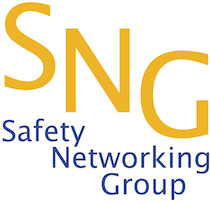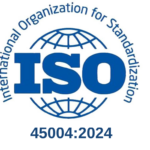During August Queensland Rail hosted the quarterly Safety Networking Group session.
Roslyn Miller, a Senior Advisor within WHSQ’s Healthy Workers Initiative presented on ‘Workplace Health – How do you put the ‘H’ back into WHS?’
The presentation considered what is the return on the investment for funds spent on workplace health initiatives, with International research indicating an average return of $5 for every $1 spent.
WHSQ’s research has been drawn from data from the Australia Bureau of Statistics, with comparative data across the agriculture, mining, manufacturing, construction, transport and public administration industry groups. The data was very interesting with a number of modifiable lifestyle risk factors such as physical activity, smoking, weight, alcohol intake being above the national average
The group explored the success of the Wellness program at Seqwater, and number of the SNG members shared the lessons learnt from their current wellness programs.
Contemporary research is showing that an integrated approach into the core business activities and systems of an organisation produces better results for the business. Work health and wellbeing programs / initiatives take into consideration the impacts that the work environment and the type of work can have on the health of workers, and provide activities or initiatives that are designed to make healthy choices the easy choices for workers. This type of initiative is becoming more important in modern workplaces as businesses endeavour to reap the benefits of a healthy workplace.
Mechanisms to achieve this include strategies such as:
- integrate health and wellbeing information into other health and safety communications and toolbox meetings
- review OHS policies and processes to include worker health and wellbeing issues, such as identifying hazards and managing risks
- provide information about the interaction between health behaviours and relevant industry issues, such as fatigue management, unhealthy weight or lack of fitness for work.
One of the key messages focuses on the idea that workplace health and wellbeing programs are a long term strategy, not a short term initiative – it can take time to see benefits of reduced absenteeism, injuries and workers’ compensation claims. In the short term what is typically seen is an increase in job satisfaction and productivity, while in the intermediate timeframe there will usually be better employee engagement and team cohesiveness.
When engaging with senior management is important to highlight the extended timeframe of when results can be expected to be achieved (and include this information with any business case).
Roslyn advocated the use of WHSQ’s five step program (Management Commitment, Wellness Planning, Needs Assessment Action Plan & Evaluation) and the use of WHSQ online Organisational Systems Benchmarking Tool. She also provided information on a number of resources to assist organisations with proactive prevention strategies.
The next Safety Networking Group function will be in November 2016.
ABOUT THE SNG:
In 2005 QRMC founded the Safety Networking Group for senior safety professionals working in the greater Brisbane metropolitan area. QRMC continues to coordinate and arrange for speakers to present at quarterly meetings and discuss information on contemporary WHS issues. Group members also share information from their workplaces or industries, which other members frequently find interesting and useful.
More information on the Safety Networking Group can be found on our website. Senior safety professionals contemplating attending meetings in Brisbane can contact QRMC to express an interest.











